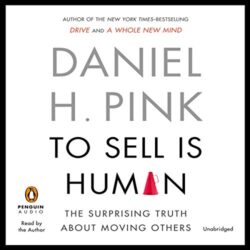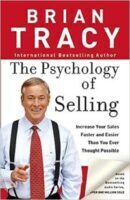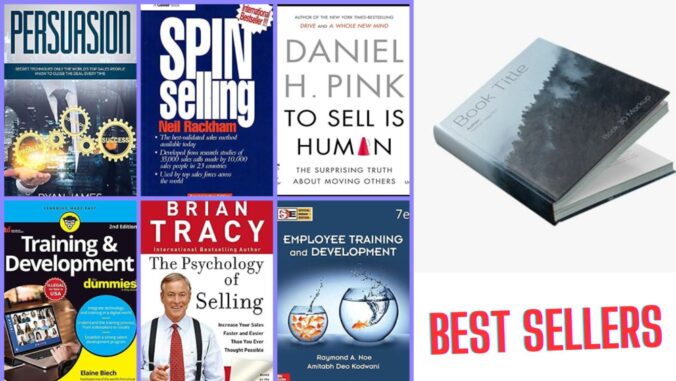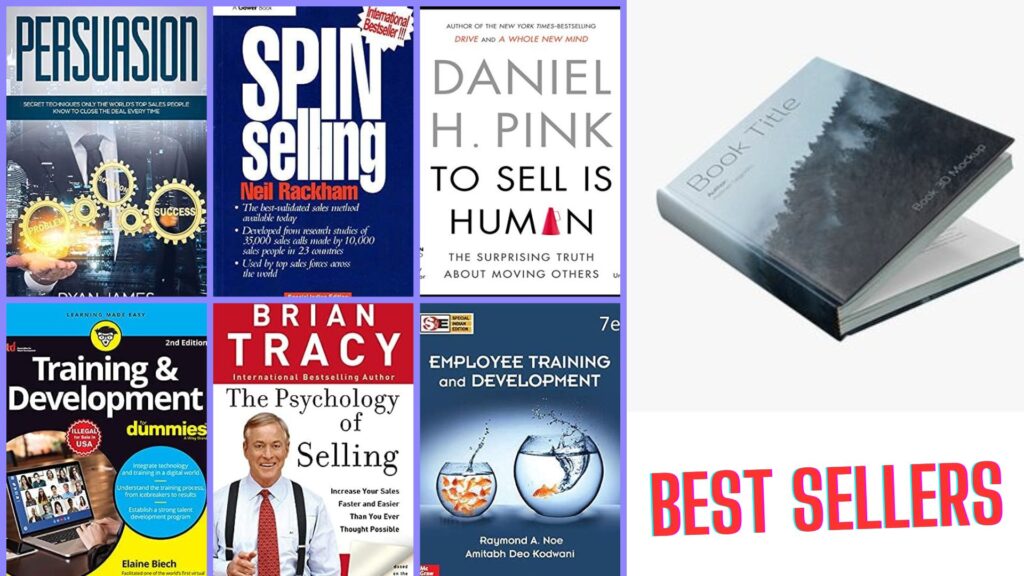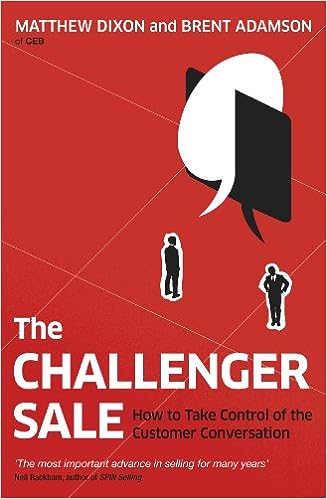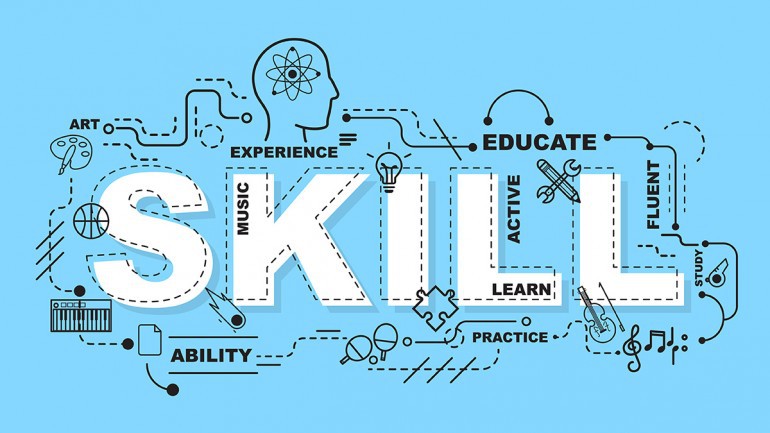Table of Contents
A book by Daniel H. Pink titled “To Sell Is Human: The Surprising Truth About Moving Others” was released in 2012. This book also Holds Names in “THE GUARDIAN” and “LITHUB” as having the highest sales Records offline and Online.

Pink examines the notion that, regardless of their formal job title, everyone engages in selling in this book.
You continuously persuade, influence, and convince others to act, whether you’re a salesperson, teacher, doctor, or business owner.
Here are some of the book’s main conclusions:
1. View on Selling
- Pink questions the conventional view of selling as an aggressive, manipulative activity.
- Instead, he offers a more inclusive definition of selling that includes being aware of the wants and needs of others as well as offering them useful answers.
2. Attunement, Buoyancy and Clarity
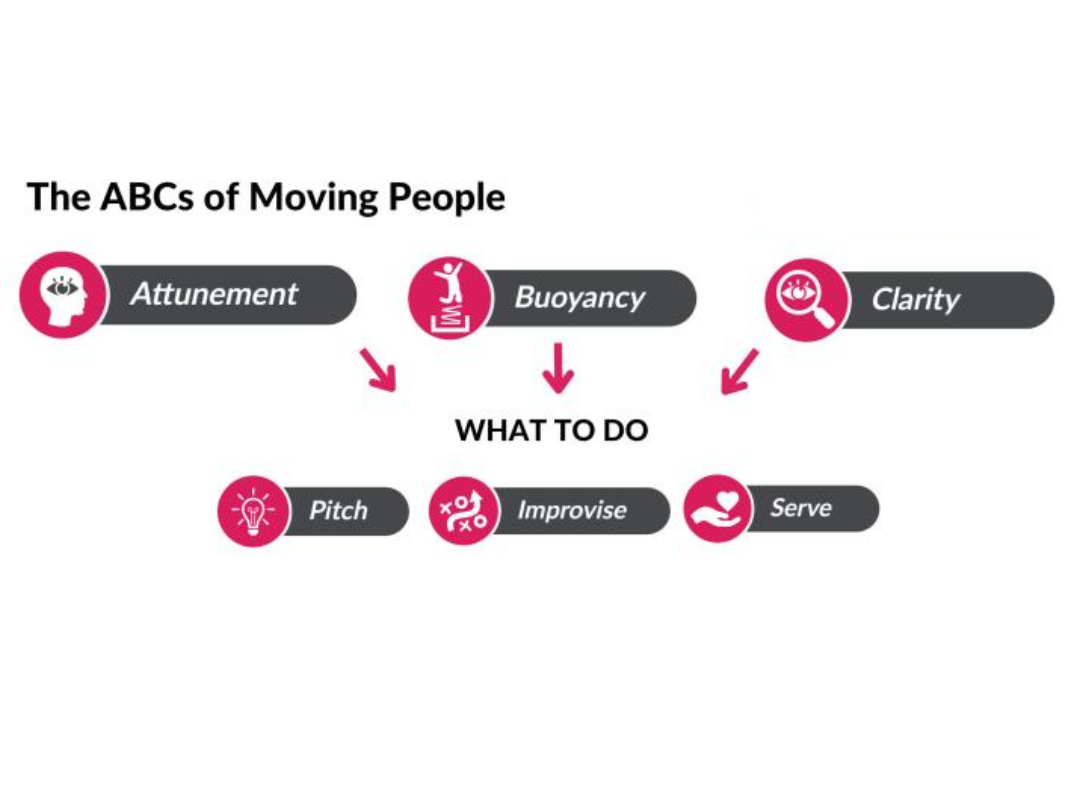
- Pink proposes the idea of “Attunement, Buoyancy, and Clarity” as crucial characteristics for successful selling.
- Understanding and empathizing with others are two characteristics of attunement.
- Buoyancy is the quality of remaining upbeat and resilient in the face of failure.
- Simplifying complicated concepts and effectively conveying them are two aspects of clarity.
3. The emergence of “non-sales selling”
- The book emphasizes how much time is spent by people in what Pink refers to as “non-sales selling.”
- This covers tasks like influencing coworkers, persuading clients, or inspiring team members.
4. The significance of problem-solving
- Effective marketing involves recognizing and resolving the issues or difficulties that other people have.
- You gain credibility and trust when you put your attention on assisting others in solving their problems.
5. Servant Selling

- Pink advocates the concept of “servant selling,” in which the salesperson’s main goal is to assist and serve the customer rather than merely closing the deal.
- More significant and enduring connections result from this customer-centric strategy.
6. Enhancing your pitch
- The book provides advice on how to create a convincing pitch by determining the wants and interests of your audience.
- The “Pixar Pitch,” which entails delivering a tale that grabs attention, piques curiosity, and has a lasting impression, is a notion Pink proposes.
7. The Impact of queries
- The correct questions may be an effective selling tool.
- It aids in understanding the viewpoint of the clients, compiles useful data, and directs the dialogue toward a more specialized answer.
8. Increasing your influence
- Pink digs into the tenets of social influence and examines many methods to increase your ethical persuasiveness.
9. Honesty and sincerity
- Honesty and sincerity are significant factors in selling, according to Pink.
- Being sincere and open with consumers fosters credibility and trust, which promotes more fruitful sales encounters.
“To Sell Is Human” is a thought-provoking book that questions conventional ideas about selling while offering helpful advice for people in a range of positions and professions.
To succeed in today’s linked world, it exhorts readers to embrace their inner “salesperson” and acquire strong communication and persuading abilities.
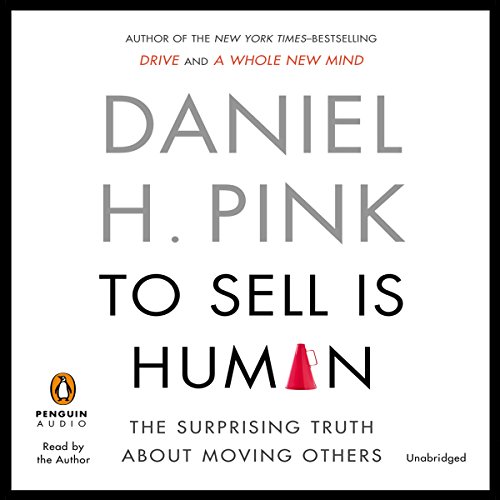
DOWNLOAD FREE AUDIOBOOK
Chapter 1 Summary:To Sell is Human: We’re All in Sales Now
Daniel Pink begins this chapter by questioning the conventional view of sales, which frequently conjures up a picture of a forceful, deceptive salesperson.
He contends that whether we are aware of it or not, we are all involved in sales in some way.
You’re fundamentally engaged in sales whether you’re attempting to convince someone to buy a product, agree with your beliefs, or even go on a date.
Pink proposes the idea of “non-sales selling,” which describes the strategies people use to convince, influence, and persuade others without using the standard tools of a traditional salesperson.
This could involve persuading a coworker to work with you on a project, coaxing your kids to finish their schoolwork, or persuading your boss to give you a raise.
He cites a poll that demonstrates that people spend a considerable amount of their working hours “moving others,” which includes activities like persuading, influencing, and convincing.
This shows that the conventional lines separating salespeople from other people have become more hazy.
Pink also touches on how the internet and increased access to information have altered the power equation from vendors to purchasers.
Customers are more knowledgeable and empowered than ever because to easy access to information, which reduces the effectiveness of the conventional sales pitch.
Finally, Chapter 1 introduces the notion that sales is no longer the sole purview of a certain industry but is a fundamental ability that all of us need to develop in both our personal and professional lives.
This sets the stage for the remainder of the book. Pink encourages readers to view “selling” more positively and expansively.
Chapter 2 Summary: To Sell is Human The New ABCs of Selling
Daniel Pink makes the case in this chapter that the conventional “ABCs of selling,” which stood for Always Be Closing, have given way to a new set of guidelines that are better in line with the reality of the modern world.
He offers a new version of the ABCs, Attunement, Buoyancy, and Clarity, to characterize the crucial abilities for effective selling in the contemporary world.
Attunement
According to Pink, attunement entails the capacity to comprehend and sympathize with the viewpoints of others.
It involves placing oneself in the position of your client or business partner in order to understand the world from their perspective.
You may better satisfy their expectations and forge deeper relationships by listening into their wants, desires, and emotions.
Buoyancy
The technique of remaining aloft in a sea of rejection is known as buoyancy.
Pink emphasizes that great sellers keep a cheerful and resilient mindset and that rejection is a typical aspect of the selling process.
Instead of seeing rejection as a personal failure, they see it as a chance to grow.
Self-motivation and the capacity to persist despite failures are key components of buoyancy.
Clarity
The ability to successfully explain your thoughts is referred to as clarity. Being brief and precise is crucial in today’s atmosphere, according to Pink.
To convince and influence others, the capacity to reduce complicated material into clear and persuasive statements is essential.
Clarity also encompasses the capacity to solve issues and persuade others of the merits of your argument.
Conclusion
Pink offers case studies and tales from the real world to show how these ideas work in practice.
He underlines that these new ABCs of selling are crucial abilities for anybody involved in influencing and convincing others, whether in business, education, healthcare, or interpersonal connections.
He claims that they are not only for salespeople.
Overall, Chapter 2 emphasizes the value of flexibility and the necessity to adopt a more human-centered approach to persuading and marketing, concentrating on understanding people, upholding a positive outlook, and speaking with clarity and empathy.
In the connected and information-driven world of today, adherence to these principles is critical for success.
Chapter 3: Clarity: The Truth About Selling
Daniel Pink goes into further detail on the value of clarity in the sales process in this chapter.
He contends that to sell well, you must be clear about not just what you’re selling but also the issue you’re resolving for your consumers and the value you’re offering.
To achieve clarity, Pink presents the idea of “The Pixar Pitch” as a framework.
He finds inspiration in the renowned animation company Pixar, which is well-known for telling gripping tales.
There are six sentences in the Pixar Pitch:
- Once upon a time…: This is where you set the stage by introducing the characters and the context.
- Every day…: Describe the normal situation or the status quo.
- But one day…: Introduce the disruption or problem that your product or service can address.
- Because of that…: Explain the consequences and the impact of the problem.
- Because of that…: Describe the actions and solutions taken to address the problem.
- Finally…: Share the resolution and the positive outcomes achieved.
The Pixar Pitch is a succinct and organized manner to explain your offering’s worth to others.
Pink adds that it is a valuable tool for effectively presenting ideas and solutions in any situation and is not just limited to sales.
Pink also touches on the need for clarity in comprehending the viewpoint of the consumer.
He presents the idea of “the 5 Whys,” a method of problem-solving that involves continuously asking “why” to identify the source of a problem.
Salespeople can better understand their clients’ requirements and motivations by using this strategy.
Clarity is not only about communicating; it’s also about understanding, resolving issues, and adding value to others, as the chapter’s conclusion emphasizes.
Clarity becomes a potent instrument for persuasion and influence in a world of knowledge and options.
Overall, Chapter 3 emphasizes the need for clarity as a key selling ability and provides helpful strategies, such as the Pixar Pitch and the 5 Whys, to assist salespeople and individuals in improving their communication skills and attending to the requirements of their clients and coworkers.
Chapter 4: The Case of the Clergyman’s Daughter
Daniel Pink introduces the idea of “problem finding” as a crucial talent for salesmen and anybody involved in influencing or convincing others in this chapter.
He begins by relating a historical incident about Anne Elizabeth Darwin, Charles Darwin’s daughter, who wrote to her father about an odd discovery concerning the behavior of worms.
Darwin was fascinated by his daughter’s capacity to see an issue that others had missed, and this inspired him to carry out a study that influenced his seminal work on earthworms.
Pink utilizes this narrative as a metaphor to highlight how crucial problem-solving is to the sales process.
He contends that salespeople should also be adept in issue discovery, which entails figuring out the unmet wants, difficulties, or hidden aspirations of their clients, rather than only concentrating on problem-solving.
The chapter provides several methods and tactics to enhance problem-solving abilities:
AFT (Always Be Framing)
Pink advises salespeople to frequently reframe their perception of the client’s issue.
Salespeople might find fresh insights and possibilities by approaching the issue from several viewpoints.
Pitching vs. Questioning
Pink contrasts the conventional strategy of pitching a solution with a more successful strategy of posing inquiries to ascertain the demands of the client.
He contends that asking the correct questions can result in a more accurate diagnosis of the issue and a more suitable fix.
Interrogative Self-Talk
Pink presents the idea of “interrogative self-talk,” which is asking oneself questions on the current issue. Salespeople can better grasp the customer’s position by doing self-inquiry.
The Five Cs
Clarity, contrast, context, curiosity, and creative synthesis are the five Cs that Pink lists as being necessary for successful problem solvers. These traits enable people to approach issues from a novel angle and with a deeper comprehension.
Conclusion
The chapter emphasizes the fact that solving problems requires not just recognizing problems but also comprehending their emotional and social components.
Customers may connect with salespeople who are good at problem-solving on a deeper level, and they can give solutions that satisfy their demands.
In general, Chapter 4 emphasizes the value of problem-solving as a crucial competency in sales and persuasion.
It encourages people to look under the surface and find the possibilities and difficulties that lie beneath, since doing so may result in deeper and more fruitful connections with stakeholders and consumers.
CHAPTER 5: SERVE
The book “To Sell Is Human” by Daniel H. Pink has a chapter named “Serve.” Pink examines the idea of service in this chapter as a key component of effective selling. The main ideas are outlined as follows:
The Emergence of the Service Economy: Pink talks about how the previous “seller beware” market gave way to the more recent “buyer beware” industry. Customers are more aware and powerful than ever because they have easier access to information. Because of this, conventional sales strategies that rely on persuasion and coercion are losing their effectiveness.
Selling as Problem Solving: Pink highlights that effective selling is about assisting customers in solving their issues rather than trying to persuade them to purchase unnecessary goods. He contends that salespeople are fundamentally problem solvers and that the most successful ones are those who concentrate on comprehending and meeting the demands of their clients.
Attunement, Buoyancy, and Clarity in Service: Pink outlines the three fundamental characteristics that are necessary for successful selling: clarity, buoyancy, and attunement.
The capacity to comprehend and feel another person’s thoughts and feelings is known as attunement, and it helps salespeople establish stronger connections with their clients.
The capacity to reduce complicated material into clear, concise statements that appeal to consumers is a necessary component of clarity.
The Six Elevator Pitch Successors: The “six successors to the elevator pitch,” as defined by Pink, are crucial sales techniques in the modern market. They include:
- Pitch
- Improvise
- Serve
- Connect
- Clarify
- Navigate
The Principle of Generosity: Pink highlights how crucial generosity is while selling. He contends that producing value for clients rather than taking advantage of them is the key to effective selling. Salespeople may develop enduring connections with their clients and establish trust by emphasizing service and assistance to others.
In general, Chapter 5 of “To Sell Is Human” underscores the transition towards a more service-oriented methodology in sales and stresses the significance of empathy, perseverance, and magnanimity in proficient salesmanship.
Conclusion of the Book “TO SELL IS HUMAN”
Daniel H. Pink concludes “To Sell Is Human” by summarizing the main ideas and lessons learned from the book and offering some closing thoughts on the nature of selling in the contemporary world. The conclusion may be summed up as follows:
1. The Changing Nature of Selling: Pink restates how the “seller beware” dynamic, which is more transparent and information-rich than the old “buyer beware” approach, is the result of this evolution in the nature of selling. He highlights how these changes have changed the tactics and abilities needed to close deals.
The Significance of Flexibility: Pink emphasizes the flexibility needed in today’s sales climate. He highlights that adaptable salespeople who can rapidly pick up, forget, and pick up new skills in response to shifting conditions and client demands are the ones that succeed in the field.
The ABCs of Selling: Attunement, buoyancy, and clarity—the “new ABCs of selling” that Pink first mentioned earlier in the book—are revisited. In the twenty-first century, these attributes—empathy, tenacity, and clear communication skills—are critical for successful marketing.
The Six Successors to the Elevator Pitch: Pink highlights the significance of each of the six alternatives to the classic elevator pitch—Pitch, Improvise, Serve, Connect, Clarify, and Navigate—in enticing and influencing people in the modern marketplace.
The Power of Perspective: Pink addresses the wider ramifications of selling beyond its conventional meanings, emphasizing the ways in which selling abilities may be used in a variety of contexts, from persuading people to promoting causes and calling for change.
The Generosity Principle: Pink emphasizes this point in her conclusion, arguing that selling is most successful when it entails adding value to others rather than just taking it from them. He exhorts readers to approach sales with a giving and service-oriented perspective.
All things considered, “To Sell Is Human” ends with a statement that reaffirms the notion that selling is an essential component of human contact and offers helpful advice and tactics for handling the challenges of selling in the modern world.
Other Related Topics
- Sales Presentation
- Sales Forecasting
- Sales Quota
- Sales Management
- Sales Territories
- Salesman – Types & Functions
- Buying Motives – Types & Stages
- Market Research
- What is Salesmanship? – Full Concept
- To Sell Is Human: Review & Summary – Quick Read
- The Psychology of Selling – Quick Read
- Book Insights & Review: “How to Win Friends and Influence People”
- World Most Selling Salesmanship Books| You Must Buy
- The Most Essential Knowledge for a Salesman
- Personal Selling: Full Concept In Detail
- The Essential Qualities & Skills for a Successful Salesman
